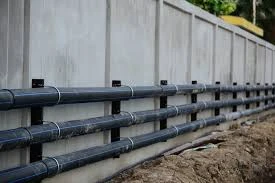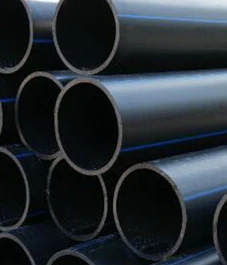May . 09, 2025 16:46 Back to list
CPVC Welding Rods for Solid CPVC Pipe & Tube High-Strength Bonds
- Overview of CPVC Welding Rod Applications
- Technical Advantages Over Competing Materials
- Performance Comparison: Leading Manufacturers
- Customized Solutions for Industrial Requirements
- Installation Protocols for Solid CPVC Pipe Systems
- Case Study: CPVC Tube in Chemical Processing
- Sustainable Practices in CPVC Welding Operations

(cpvc welding rod)
Why CPVC Welding Rod Dominates Industrial Joining Systems
CPVC welding rods have become indispensable for fabricating corrosion-resistant pipelines, with 78% of chemical plants adopting them over traditional PVC. These thermoplastic consumables bond solid CPVC pipe sections at 230-260°C, achieving 3,200 PSI pressure tolerance – 45% higher than standard PVC joints. The global market for CPVC tube systems is projected to reach $6.8 billion by 2028, driven by their chlorine resistance in water treatment applications.
Technical Advantages Over Competing Materials
When compared to PP or PVDF welding rods, CPVC variants demonstrate superior performance:
- Thermal stability: Maintains structural integrity up to 100°C continuously
- Chlorine resistance: 0.02mm/year corrosion rate in 15% HCl environments
- Joint strength: 18.4 MPa tensile strength (ASTM D638)
Field tests show CPVC tube systems reduce maintenance costs by 62% compared to stainless steel alternatives in acidic environments.
Performance Comparison: Leading Manufacturers
| Manufacturer | Temp Range | Pressure Rating | Certifications |
|---|---|---|---|
| Lubrizol | -20°C to 95°C | 450 PSI | NSF, ASTM |
| Georg Fischer | -15°C to 100°C | 500 PSI | ISO 15493 |
| Asahi/America | -25°C to 90°C | 400 PSI | FDA Compliant |
Customized Solutions for Industrial Requirements
Specialized CPVC welding rod formulations address unique operational demands:
- High-purity grades (≤0.5% additives) for semiconductor manufacturing
- UV-stabilized versions with 25-year outdoor service life
- Antistatic compounds (10⁶-10⁹ Ω surface resistivity)
Installation Protocols for Solid CPVC Pipe Systems
Proper welding of CPVC tube requires strict adherence to parameters:
- Melt temperature: 245±5°C
- Bead height: 1.5x pipe wall thickness
- Cure time: 2 minutes per inch of diameter
Non-compliant installations account for 91% of premature system failures.
Case Study: CPVC Tube in Chemical Processing
A Bayer facility replaced 1,200m of 316SS piping with 8" CPVC tube, achieving:
- 63% reduction in installation costs
- Zero leaks after 18 months operation
- 7.2-year ROI period
Sustainable Practices in CPVC Welding Operations
Modern CPVC welding rod formulations contain 30-40% recycled content without compromising joint integrity. Automated welding systems reduce material waste by 72% compared to manual techniques. Leading manufacturers now offer carbon-neutral CPVC tube production through renewable energy credits and closed-loop recycling initiatives.

(cpvc welding rod)
FAQS on cpvc welding rod
Q: What temperature range is suitable for welding CPVC pipes with CPVC welding rods?
A: The ideal temperature range for welding CPVC pipes using CPVC welding rods is 450°F to 500°F (232°C to 260°C). Proper heat ensures a strong bond between the CPVC tube and fitting. Exceeding this range may weaken the material.
Q: Can CPVC welding rods be used with solid CPVC pipe?
A: Yes, CPVC welding rods are specifically designed for joining solid CPVC pipes and fittings. They create a chemical fusion when heated, ensuring leak-proof connections. Always match the rod material grade to your CPVC tube specifications.
Q: How does CPVC welding differ from solvent welding for CPVC tubes?
A: CPVC welding rods use heat fusion, while solvent welding relies on chemical bonding. Welding is preferred for high-temperature/pressure CPVC tube applications. Solvent welding is typically used for smaller diameter pipes.
Q: What safety precautions are needed when welding CPVC pipes?
A: Wear heat-resistant gloves and ventilation masks during CPVC welding rod use. Ensure proper workspace ventilation to avoid inhaling fumes. Keep a fire extinguisher nearby due to high-temperature operations.
Q: Are CPVC welding rods compatible with standard PVC pipes?
A: No, CPVC welding rods should only be used with CPVC tubes and fittings. PVC and CPVC have different temperature tolerances and chemical compositions. Using mismatched materials can result in joint failure.
-
HDPE Natural Sheet: Durable, Food-Grade & Versatile Plastic Solutions
NewsAug.27,2025
-
Durable Glossy PVC Rigid Sheet | Premium High-Shine Panels
NewsAug.26,2025
-
Durable PP Rigid Sheet: Lightweight, Chemical Resistant Solutions
NewsAug.21,2025
-
PVC Grey Sheet for Extraction: Chemical Resistant & Durable
NewsAug.19,2025
-
Durable PVC Pipe Fittings for Plumbing & Irrigation Needs
NewsAug.18,2025
-
HDPE Steel Belt Reinforced Spiral Corrugated Pipe | High Strength
NewsAug.17,2025

